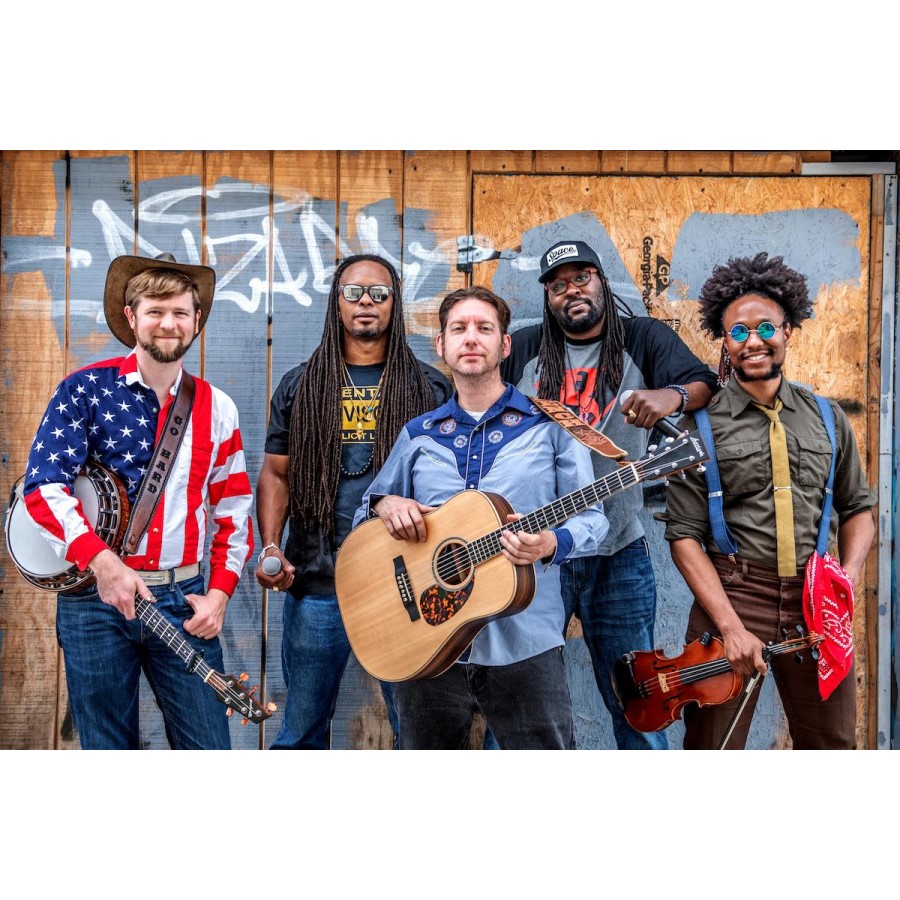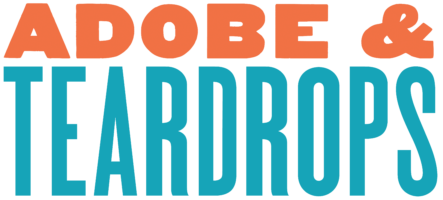Gangstagrass are veterans of the stage, finding the common ground between all forms of American music: bluegrass, folk, country, R&B, rap, and hip-hop. The band’s recent single, “The Only Way Out is Through,” is a high-energy anthem that will amp you up so much you’ll want to run through a brick wall. (Also, Jerry Douglas rips through a dobro solo.) The band was kind enough to answer some questions as we anticipate their next project.

Credit: Melodie Yvonne
Gangstagrass is so dynamic – and there are always so many moving parts in your songs. What does the songwriting process look like for you? And when does arranging the many sonic elements begin?
R-SON the Voice of Reason: The songwriting process for me is unique from track to track. Sometimes it’s based on whatever the specifics of the song require – if there’s a specific theme, for example. But other times it’s just a matter of starting it at a space and then building the verses from wherever I began and making it as intricate and as interesting as possible and if it needs to fit a specific thing so be it; otherwise, it’s just very sort of free form for me.
Rench: Anytime we are together, ideas are bubbling up. The hard part is often to keep it from getting too crowded with all the parts we come up with for a single song.
Dolio the Sleuth: Often it’s us jamming somewhere, and finding a groove that inspires creative action. Sometimes the jamming will result in a track that Rench will put together as a beat, then we start cranking on the vibe of it. Sometimes it’s a verse or two that one of us has milling around, and we build a song around it. (At least one of the songs on this album started as a poem I wrote while we were on tour, about observations and thoughts I had at the time.) Thematically, we tend to write about things we care about, and we try to make sure it comes out naturally in a way that people can feel it.
“The Only Way Out Is Through” is an inspiring song. How did it come together?
Danjo: This one started with me; I recorded a couple instruments just jamming on a high-energy groove, then Rench put a hook on it. R-SON and Dolio wrote killer verses, but that’s where our usual process left off and we kept adding new things. Rench’s production on the track was definitely more charged-up, and we had the opportunity to throw some low brass on a couple tracks including this one. But the final touch was getting Jerry on dobro. I was very proud of this one, from beginning to end, from a concept track in my home studio all the way to something I felt comfortable sending to Jerry Douglas and knowing he would at least consider recording on it. And we’re so glad he did.
Dolio: Rench put together a banger of a track and the hook, then we all started to figure out how we’d put our sauce on it. By the time we got to the studio, we were ready to go in, each with our take on the theme of pushing through no matter what, which is what we do when we encounter pushback or opposition: continuously push things forward.
Rench: Yes, Danjo provided some top-quality ingredients and I threw that pizza together and we topped it with amazing verses.
How was it to work with Jerry Douglas on this song?
R-SON: One of the benefits of working with Gangstagrass is that it’s introduced me to a lot of new musicians and really talented musicians. Before a couple of years ago I had never heard the name Jerry Douglas and then when we really started getting deeper into different musicians and music styles, they put me on Jerry. We got a chance to meet him at Grey Fox last year and watching this dude get down with us on the main stage was like “oh! okay!” so when I found out we were getting him to do this track my mind was blown. I’m like, “oh word that guy! cool!” and man, when I heard the whole thing, I’m like, “this is that dude!” So, it was really exciting for me to have that happen and to hear the whole thing. It’s mind blowing how good he is.
Dolio: Jerry Douglas is a name that is inextricable from discussions of the dobro. I mean, as far as what he does as an instrumentalist, he’s definitely one of the most celebrated and lauded, and with good reason. The man is a certified BEAST with it. He joined in with us at Grey Fox while he was the resident artist and he was so in the pocket that it sounded like he’d been rocking with us for years. We just had to work with him on a track after that. The fact that he was down with it was epic!
Danjo: Jerry is everything I love about progressive bluegrass. He’s got one foot rooted in a genuine love of traditional music, and the other foot constantly stretching forward and outward, looking for new directions. Getting a lifelong hero of mine on this track really represents so much more than just this track, to me. I think it says something about what we are doing, what we’ve managed to accomplish over the last decade-plus. Gangstagrass’s track record shows we are serious about what we do.
You also teach educational workshops for K – 12 students. How do you approach these workshops? Do you feel that they’re different than a show for adults?
Dolio: Many of us are educators in different disciplines, so as far as the educational approach, we come at it with a desire to inform and make it engaging at the same time. With younger groups, it’s about finding the points of reference that are familiar to them, and building from there. We show them that they too can use whatever sources of inspiration are available to them to create something meaningful.
With adults, we can take a more analytical approach, as the topics tend to have heavier implications or more complex issues to address. There is also some variety in the types of workshops we put together. Sometimes it’s songwriting and genre-bending, sometimes it’s a historical dissection of the concept of genre itself, sometimes it’s about the complexities of algorithms used to disseminate creative material to the general public, and how to influence them.
Rench: Or maybe it’s not so much about whether it’s for youth or adults, the big difference is our concerts are focused on the music and the energy, and it wouldn’t make sense to stop and go into the details of the history of genre with a spoken presentation. With workshops, that is our chance to take the time to share all the things we have been learning about the significance of what we do on stage. We can tailor it to be age appropriate, but we’ve covered those ideas for audiences in grade school and for audiences of adult activists and scholars.
Sleevs: One of the most uplifting things about a Gangstagrass show is the amazing variety of people in the audience. You’ll see a 7-year-old kid dancing like a maniac in the front row, and a few feet away there’s a white-haired long-bearded dude in his 80s, also dancing and singing along! And they’ll both come up to us after the show to meet the band and get their t-shirts signed and ask when and where they can do it again. It’s not unusual to see a mom with a baby in a Gangstagrass onesie, one arm cradling the baby and one arm waving as she grooves with her kid, and groups of high school and college students with screaming girls reaching out to high-five R-SON as he raps in their faces from the very front of the stage.
Gangstagrass audiences have people from the city and from the country, conservatives and progressives, children and grandparents and everyone in between. We create a space where no matter who you vote for or where you’re from, you can come with your whole fam or by yourself and get down how you do and have a great time. And you’ll meet people from different walks of life that you might not have met anywhere else – and see that maybe you’re not so different after all. The workshops get that point across intellectually; with the live shows, it’s a more visceral, hit-you-in-the-depths-of-your-soul experience.
You’ve all been working for a long time to help people understand the common ground between bluegrass and rap. What are you hoping will come out of this current moment of other artists realizing these possibilities?
Dolio: For me, it’s about solidifying the common interface they implement, which is Folk. It comes from Folk, which makes it accessible to anyone who chooses to participate and contribute to it in a meaningful way. They both use storytelling as the vessel to connect the artist to the audience, and foster a culture of collaboration. Bluegrass and hip hop came out of similar conditions, cultivated in the same spirit, so it just became a natural fit.
Rench: I would still like for more musicians to be blurring these lines. Right now, there is a significant national conversation spurred by Beyoncé, which is opening eyes to the existence of all the amazing Black country music historically and currently, and that is really exciting. I think it will open the door to a lot of experimentation, and we will welcome all of it with open arms.
